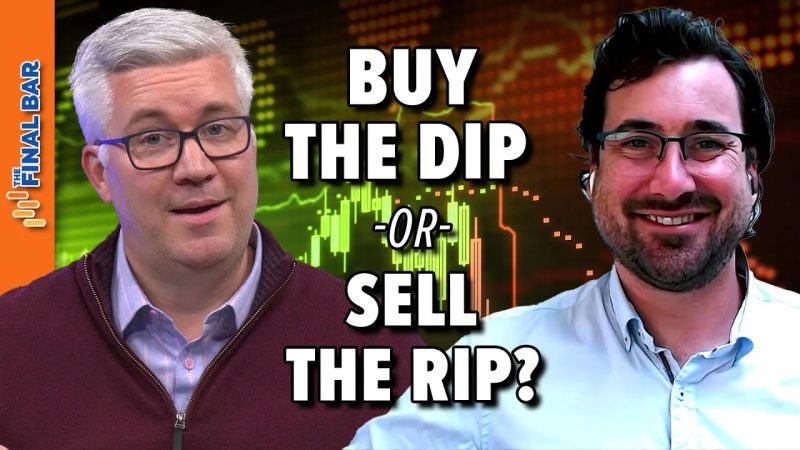In the world of investing, the decision whether to buy the dip or sell the rip can often be a challenging one. This dilemma essentially boils down to whether an investor should capitalize on a market downturn by buying low or take advantage of an uptrend by selling high. Both strategies have their merits and risks, and understanding the underlying factors that drive market movements is essential in making informed decisions.
Buying the dip refers to the strategy of purchasing assets when their prices have declined, generally due to broader market sentiment or macroeconomic factors. This approach is based on the principle of buying low and selling high, with the expectation that prices will eventually recover, yielding potential profits. Investors who subscribe to this strategy often believe in the long-term growth potential of the asset and see temporary price declines as buying opportunities.
On the other hand, selling the rip involves taking profit when asset prices are rising or have reached new highs. This strategy aims to lock in gains before a potential pullback or market correction occurs. Investors who advocate for selling the rip often adhere to the notion of taking money off the table to protect their profits and mitigate downside risks in volatile market conditions.
The decision to buy the dip or sell the rip is not always straightforward and requires careful consideration of various factors, including market trends, economic indicators, and individual risk tolerance. Market timing plays a crucial role in executing these strategies successfully, as buying too early during a dip or selling too soon during a rip could result in missed opportunities or losses.
Moreover, investors should also evaluate their investment goals, time horizon, and overall portfolio diversification when determining whether to buy the dip or sell the rip. A balanced approach that combines both strategies based on market conditions and individual circumstances can help optimize investment returns and manage risk effectively.
Ultimately, there is no one-size-fits-all answer to the buy the dip or sell the rip dilemma, as each investor’s situation is unique. It is essential to conduct thorough research, stay informed about market developments, and consult with financial advisors to make well-informed decisions that align with your investment objectives and risk appetite.
In conclusion, whether you choose to buy the dip or sell the rip, the key is to have a clear investment strategy, remain disciplined in your approach, and adapt to changing market conditions. By staying informed, diversifying your portfolio, and monitoring your investments regularly, you can navigate market fluctuations with confidence and optimize your overall investment performance.

